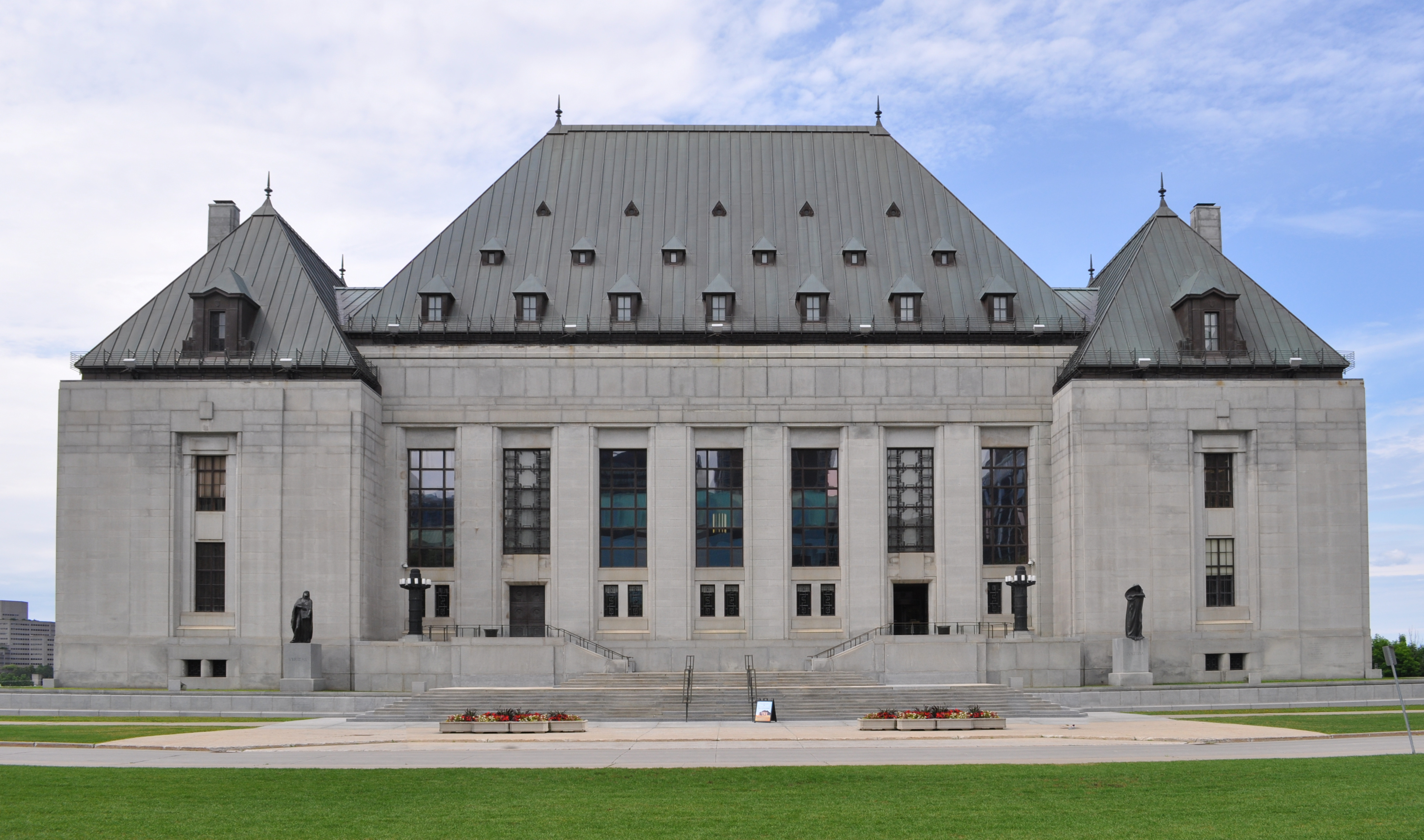Intellectual property law is good. Excess in intellectual property law is not. This blog is about excess in IP and related law. I have practiced law with prestigious firms and successfully acted for interveners in several important Supreme Court cases. I've also been in government & academe. My views are purely personal. Nothing on this blog should be taken as legal advice. I am a policy provocateur and currently not practising law. My email address is hknopf@gmail.com.
Saturday, October 24, 2020
Leave to Appeal Granted in Access Copyright v. York U
Thursday, September 24, 2020
The Outpost - Mass Copyright Litigation
Another instalment in the mass litigation litany from the Aird and Berlis firm has now been released involving The Outpost - a 2020 picture.
There are 841 "Doe" defendants. See attached Statement of Claim.
HPK
Wednesday, September 23, 2020
Access Copyright v. York University - Update on Supreme Court - Replies Have Been Filed
Friday, September 04, 2020
Access Copyright and York U File Responses in SCC
Thursday, September 03, 2020
The Copyright Board’s New $757,548.50 (+?) Website – Finally an Apparently Functional Search Engine – but Otherwise Disappointing at Best and Problematic at Worst – And Still NO CANLII Presence
The Copyright Board finally announced its “new” website yesterday, September 2, 2020:
The Copyright Board
welcomes you to its new website! This new platform is based on a more intuitive
architecture, designed to improve navigation, and accessibility to Board
information and products in both official languages, as required by
the Official Languages Act.
One major innovation on
the website is the incorporation of Decisia (by Lexum). This platform allows
users to have access to the resources made available by the Board, such as
documents, decisions, approved tariffs, licences for the unlocatable copyright
owners regime, and much more. Discover it here. Additionally,
users can subscribe to
Decisia's mailing list and receive weekly updates on the
publication of new documents. This innovation supports the Copyright
Board’s broad objective toward ensuring greater transparency and access to
justice for all Canadians.
It apparently has cost at least $757,548.50 that we
know about. Some quick next day comments:
For those who had laboured to become familiar with the
previous website, some things – such as Notices & Rulings – have inexplicably
disappeared from plain sight and can only be found through the thankfully finally
apparently functional Search facility – which has been needlessly non-functional
for as long as I can remember. The Notices and Rulings are still not up to date
after December, 2019.
Apart from a new look, there is apparently little new useful
information or other evidence to
substantiate that this “This new platform is based on a more intuitive
architecture, designed to improve navigation, and accessibility to Board
information…”
There is a somewhat useful page for “Ongoing Cases”
– which presents a bit more conveniently the same information that what was
already there and not very hard to find.
There is also a listing of “Filed Agreements” – though only for 2017 on – which are
presumably available upon request though “Agreements will continue to be
screened before access for the purposes of the Privacy Act.”
There are lot of apparently new entries in the FAQ section.
Some are misleading to users and maybe even dangerously deferential to
collectives. An unnecessary enquiry to a collective can put someone on that
collective’s radar and needlessly at risk. And few if any collectives have
comprehensive and reliable information online about their actual repertoire. In
the case of Access Copyright, it’s something of a joke. As I’ve pointed out
several times, it is happy to sell you a license to ancient public domain
editions of Charles Dickens Christmas Carol. More on this FAQ stuff later. Frankly,
the Copyright Board has no mandate to provide legal or even vaguely general copyright
advice to the public and should not be using its resources to do so. To the
extent that such information is accurate, appropriate, useful, and warrants government
resources, it should be provided by CIPO.
One notably non-responsive and even evasive FAQ response
to the utmost important and most often asked question of How Long It Takes the Copyright
Board to Render its Tariff Decisions is this:
The Copyright Act provides
that "cases before the Board are heard expeditiously and without
formality".
The complexity and level
of preparation of the file submitted may influence the time taken by the Board
to examine the application as well as the time taken to deliberate leading to a
decision, for example, if the file is incomplete.
The number of
stakeholders can also indirectly influence the duration of the process, since
this increases the possibility of having an objection to the proposed tariff;
or if there is objection, since the objectors must present their arguments in
writing. Once the objectors' files are considered complete and have been
presented, the Board enters into deliberation. Its decision is made public when
it approves the tariff and publishes it in the Canada Gazette.
The fact is that it can take the Board almost ten years
to retroactively approve an effectively uncontested tariff in circumstances
that make the result inconclusive, e.g. the Access Copyright Post-Secondary
tariff, which I wrote about here on January
22, 2020. Not surprisingly, the key links I provided don’t
work any more.
Indeed, a lot of old links unfortunately no longer
work – for example the links I reported on the $757,548.50 budget allocated to
the new website as of November of 2019. See here.
The information is still there on the Board’s website – but the old links don’t work any more.
The search engine appears to functional back to 1990 –
though I haven’t fully tested it yet.
However, the
overwhelming problem that remains is this:
The Board’s
Reasons of Decision and Tariffs are NOT available on CANLII, where a simple one
stop search would produce results – for example for “making available” – that
would include BOTH Copyright Board and Court decisions. CANLII searches can be
fine tuned using the “advanced” tools.
I have looked into this CANLII issue very carefully
and received very knowledgeable information. There is no reason why the Board’s
decisions and tariffs is couldn’t have been made available on CANLII at no cost
many years ago. There is no reason why this should not immediately happen going
forward with coverage since at least 1990. There is no need for any additional
cost to taxpayers.
Other comparable tribunals that are on CANLII include:
- The
Trademarks Opposition Board
- Commissioner
of Patents
- The
Competition Tribunal
See: https://www.canlii.org/en/ca/
I have tried but been unable to get any direct answer from the Board about the inexplicable
and conspicuous absence of its decisions on CANLII.
The Board’s adoption of the background engine DECISIA
– which can be used for better (e.g. for better at the SCC and apparently for
worse at the Competition Tribunal) can allow for feeding of cases to CANLII – but this is not
and never has been a necessary aspect of such utility – which is an essential component
of access to justice.
So – the bottom line for now is that we have a website
with a new look but few new useful aspects – except for a finally apparently
functional search engine, which I will test further later. That could and should
have been fixed at no cost many years ago. The Board has regularly spend a very
large amount for many years on outside sources for its website with a
non-functional search function. Indeed, my own blog has a fully functional
search function and a daily – not weekly - email update feature and my software
costs nothing. It’s not easy to see how or why the Copyright Board’s “new” website
has cost taxpayers at least the $757,548.50 that we know about.
It would appear that older snapshots of the Board’s website
are available on the marvellous Wayback Machine at www.archive.org .
If anyone sees any positive or negative aspects I may have
missed in this next day quick review, please comment below – which you can do
anonymously if you wish – or email me privately.
And, BTW, the position of Chair of the Board remains
vacant. That is a serious issue and we really need to have a top notch sitting,
supernumerary or retired judge – preferably from the Federal Court or the
Federal Court of Appeal and with no ties to vested interests. And someone who
is willing take on the challenge, wherever it may lead, of ensuring that better
decisions are rendered in a time frame consistent with other Canadian courts and
tribunals.
HPK
Thursday, June 25, 2020
Access Copyright and York University File Leave to Appeal Material in the Supreme Court of Canada
York University’s material deals with the fair dealing aspects of the FCA decision:
(updated June 26, 2020)
Copyright Board Activity in 2020: Launch of Twitter Account and Guidelines for Economic Evidence
Wednesday, June 10, 2020
The Federal Court of Appeal Makes its Making Available Judgment Available: It’s Not Just About “The Vibe”
In 2004, the Court ruled the Board was wrong to conclude that the permanently embedded or non-removable memory, incorporated into a digital audio recorder or the device itself, was “an audio recording medium ordinarily used by individuals to copy music”.
In 2007, CPCC tried again and the Board was asked to determine whether the recorder itself was a recording medium as defined in the Act. It said yes in a long and well reasoned decision. The Federal Court of Appeal, once again on judicial review, overturned the Board. This time, the Court in six turgid paragraphs found its decision of 2004 dealt with the matter and was binding on the Board. I still wonder how the Federal Court of Appeal came to that conclusion when the question of whether the device itself was subject to a levy had not even been an issue in the previous decision and the comments of Noel J.A. were obiter and contained in what can only be called a “throw away line.” A throw away line that has had extreme consequences, not the least of which is at least 10's of millions of dollars in royalties that have not been paid to authors, composers and performers and threatens to destroy the private copy regime.
- Tariffs such as those sought by Access Copyright and SOCAN are not mandatory for users. This is based upon nearly eight decades of SCC jurisprudence that in turn reaches back to at least 1894
- The Copyright Board has considerable scope to set rates – including a zero rate where there is insufficient evidence to justify a tariff. But deference by the FCA won’t make the tariffs acceptable to the public if the tariffs are not sensible and timely
- The Copyright Board needs to be mindful of basic principles of statutory interpretation, including the basic and obvious axiom that international law must not be misused so as to misconstrue domestic law
- As attractive as the exercise may have been, and even by the generous standard of “reasonableness”, the Board was very unreasonable in its venture into the “vibe” of international law.






